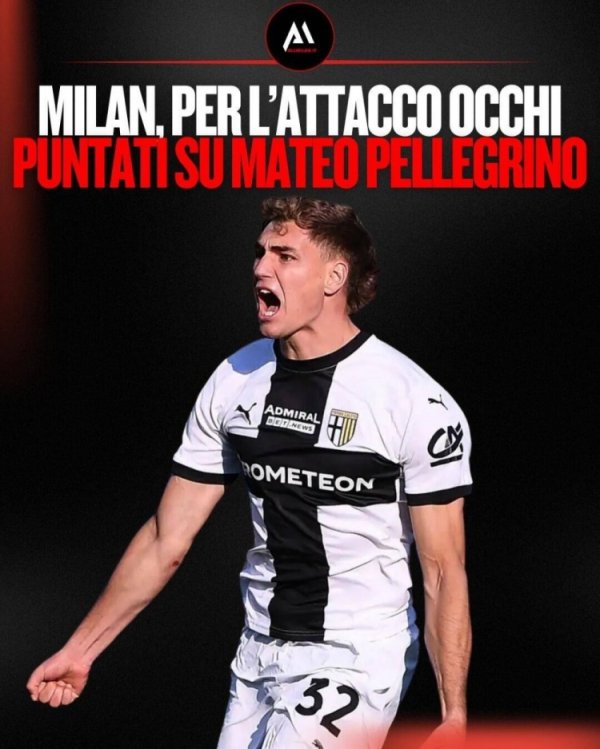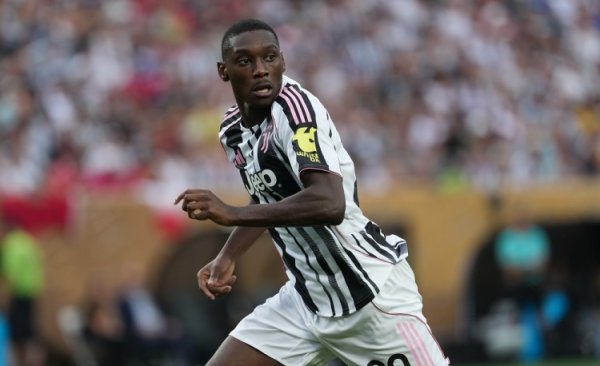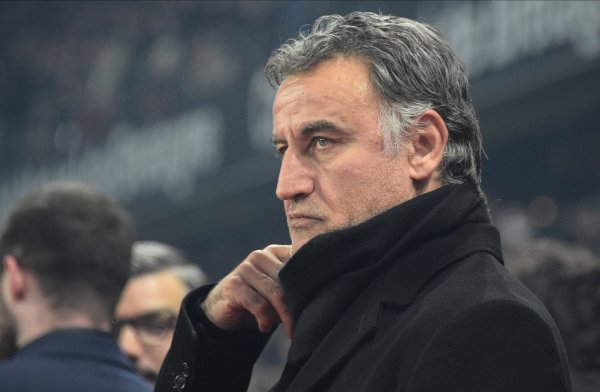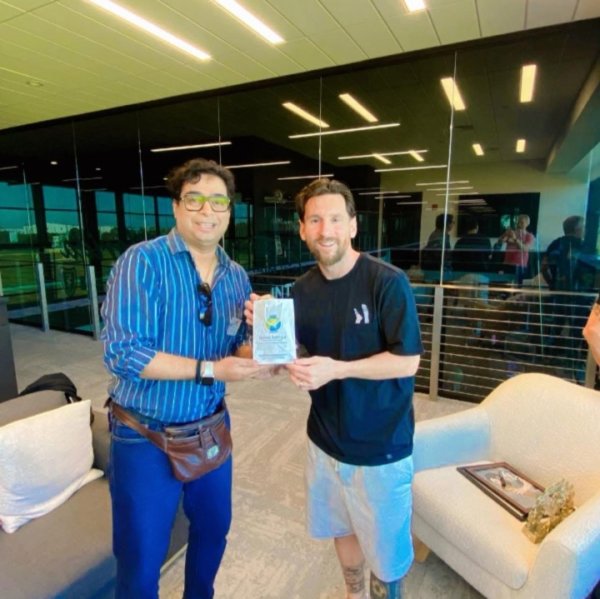Xiaoba Translator | 433 God Formation Revealed: From defeating the Holy Spirit to Guarding Guard, it is still the ultimate answer in football.

How does the 4-3-3 formation continue to shape football philosophy? The Athletic writer Conor O'Neill wrote an article explaining this eternal formation on the green field.
Formation is to football what genre films are to film and television—although classification is convenient, it is far from a complete picture. Just as you wouldn't lump Peppa Pig and South Park into the same category just because they belong to the same animated series, you would never lump Pep Guardiola's team with Mourinho's, even if both sides occasionally adopt similar starting formations.
But when combined with the team's play style, the formation can clearly show how players allocate space and responsibilities. As for the formation with the deepest imprint of style, it has to be the 4-3-3 formation - it has long been connected with "total attack and total defense". This tactical philosophy with smooth short passing as its core was the calling card of Dutch football in the 1970s.
Tracing the origin of any formation is a historical mystery. It is almost impossible to identify the originator of a certain tactical framework. Compared with its origin, the influence of the formation deserves more attention: where exactly did it rewrite the football landscape?
Although game-by-game formation statistics only emerged in the 2010s, this modern data provides an excellent perspective on the 4-3-3 formation. The figure below shows the list of teams that have most frequently used the 4-3-3 formation in the six major European leagues since the 11/12 season. The far-reaching impact of "Total Attack and Total Defense" is clear at a glance. There are 11 Eredivisie teams in the top 20, and what is even more astonishing is that six of them have played in the secondary leagues for at least one season (these games are not included in the statistics).
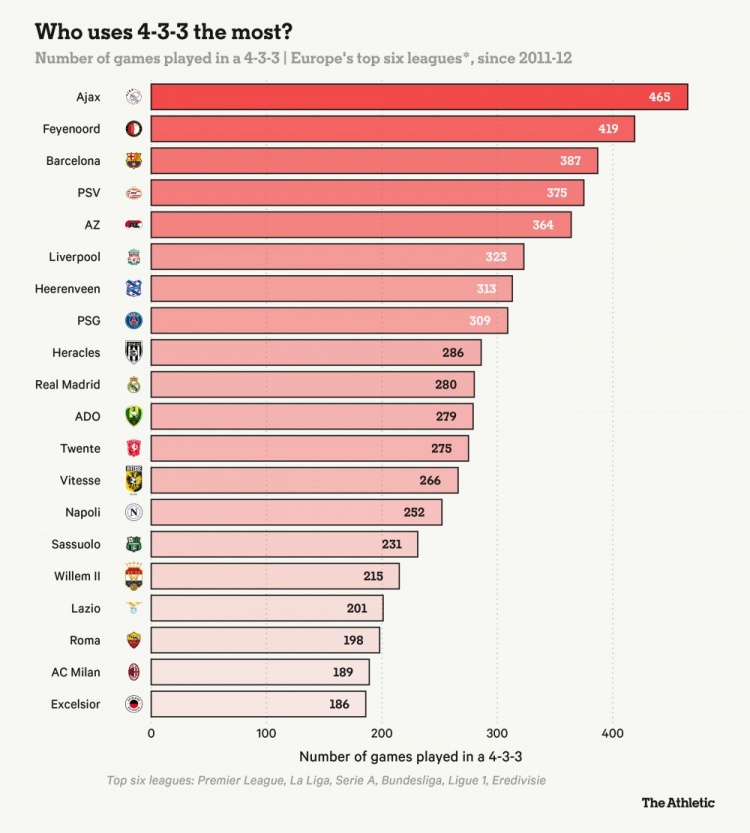
4-3-3 formation usage ranking list
This Eredivisie dominance can first be attributed to the leader Ajax. In 1965, Michels took over as coach and launched a total offense and defense revolution that put Dutch football on top of the world.
The soul of his 4-3-3 system is the maverick legend Cruyff - the talented forward who has been crowned the Ballon d'Or three times has been known for his outspokenness throughout his life. He never passively executes tactics, but actively participates in building Ajax's system.
In his autobiography "My Turn", Cruyff explained the core concept of the 4-3-3 formation: "Five fronts" will be formed when attacking - four backs, a single defensive midfielder, double No. 8 midfielders, double wingers, and "a center that wanders between the defense and the front line." He wrote: When these fronts work perfectly, "countless triangular passing nets will emerge on the green field."
Cruyff firmly believed that this structure not only creates more ball release points, but also encourages players to adopt accurate diagonal passes. He hates cross passes because he believes they slow down the tempo, interrupt the attack, and expose a vacuum on the wing to the opponent once intercepted. He warned: "The price of a cross pass error is the loss of two defensive players in an instant."
The continuous substitution of players in the 4-3-3 system has become a distinctive label of Cruyff's football. This groundbreaking idea leaves opponents at a loss as to what to do, but freedom is not without constraints. Cruyff never cared about who occupied a certain position, but insisted that the team must maintain the overall structure.
This precise formation supports Ajax's other killer move - high pressure. They were the first to popularize the "sweeper goalkeeper" and the high defensive line. The combination of these two concepts allows Ajax to firmly suppress the opponent in the half-court and immediately launch a counterattack after losing the ball.
"The defensive zone constructed in this way is 45 meters long, 60 meters wide, and the battle lines are about 9 meters apart. Why are these dimensions important? Because each area can be covered more efficiently, and there is always sufficient defensive force behind the ball."
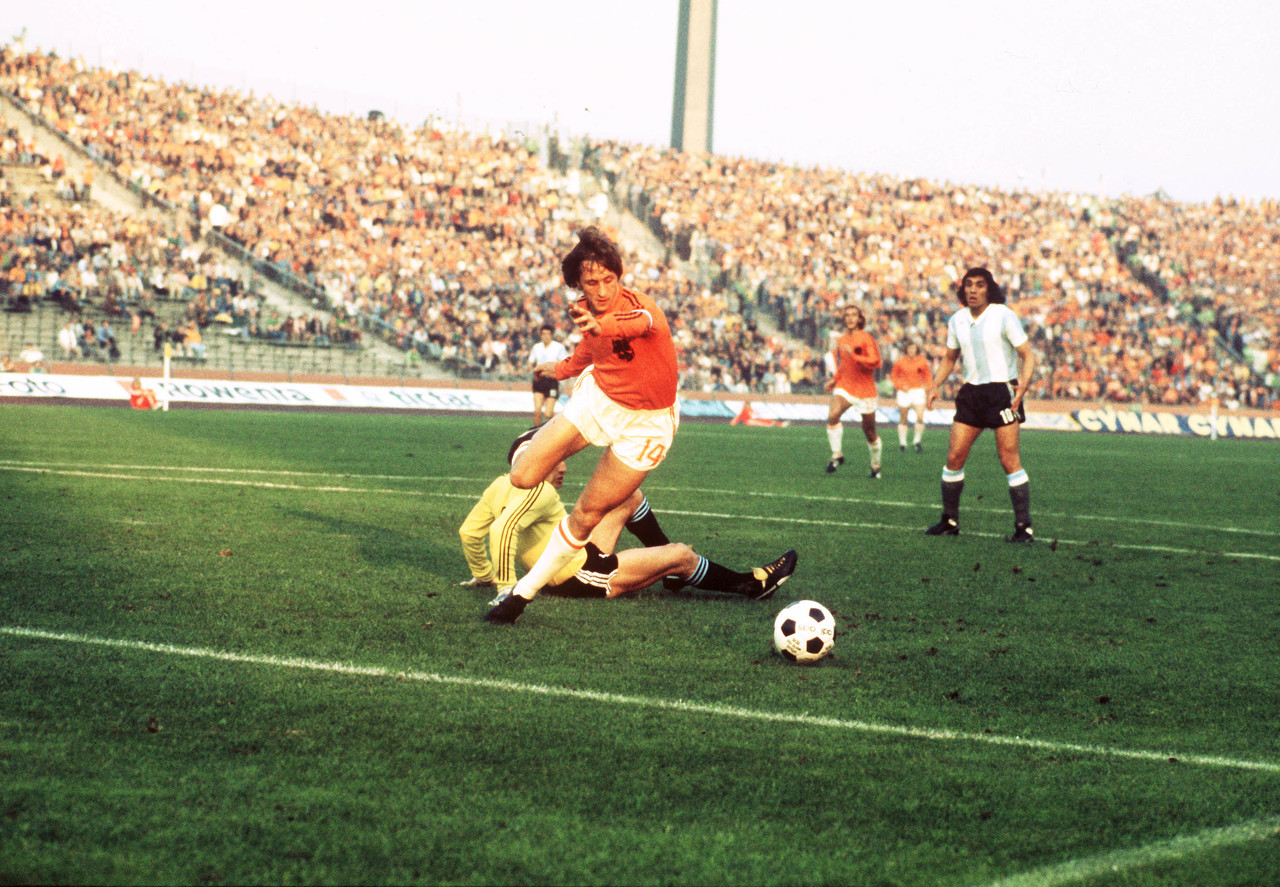
If the precise distance is not maintained, the team will lose compactness without the ball, allowing the opponent to counterattack. This strict 4-3-3 system won Ajax three Champions League trophies and remains the foundation of the club's philosophy to this day, and is even copied by domestic rivals.
Back to the 4-3-3 formation usage list, Barcelona is the only non-Dutch team in the top five. Michels brought his tactical concepts to the Nou Camp in 1971, and Cruyff followed suit - first as a player in 1973, then as the coach in 1988, and in 1992 he led the team to win the Champions League for the first time.
Guardiola, a young player in the team at the time, was deeply immersed in Cruyff's philosophy in his coaching ideas. Although he continued to innovate later, the starting point of Guardiola's coaching in Barcelona was the positional 4-3-3 formation. Guardiola once said: "Cruyff painted the temple, and the subsequent Barcelona coaches only repaired or embellished it."
Henry, who once played under Guardiola, once used "passing, ball control, and positioning" to summarize Guardiola's tactical level in the Sky Sports column. He recalled that in a certain game, he ignored the positioning rules and wandered to the opposite side to look for opportunities. Although he scored an individual goal, Guardiola replaced him at halftime as punishment for disrupting the overall formation.
Although the 4-3-3 system of Guardiola and Cruyff is the most famous, coaches of different schools have used this formation to amplify the characteristics of the team. When Guardiola's old rival Mourinho was at Chelsea, he regarded the 4-3-3 formation as a weapon to control the number of midfielders. Makelele, Essien, Mikel and Lampard usually formed a muscular midfield to crush opponents. This system rarely implements high-position counterattacks, but allows the wingers to retreat to form a similar 4-5-1 formation to keep the formation compact.
Klopp, who later won the Premier League, built a 4-3-3 system almost entirely around counterattacks. He used three advanced forwards to suffocate the opponent's half. This passionate "heavy metal football" originated from his accumulation in Mainz and Dortmund. Klopp once said frankly to Sky Sports: "There is no playmaker in the world who is more powerful than an efficient counter-attack."

The 4-3-3 formation under Klopp
Although Klopp's successor Slott inherited the tradition of the Dutch 4-3-3 system, he adjusted the formation to a 4-2-3-1 formation.. This change reflects the tactical evolution of Dutch football - which is gradually moving away from the "family style" advocated by Cruyff. As shown in the figure below, only 29% of the Eredivisie formations last season were 4-3-3, a sharp decline from the peak of 79% in the 2013/14 season.

Changes in the frequency of 4-3-3 formations used in various leagues
Slott nominally played the 4-2-3-1 formation when he was at Feyenoord, but he refused to be stereotyped at the Liverpool debut conference. When asked how to adapt to the 4-3-3 system, he responded: "I hope that when people pay attention to my team, they will not be obsessed with the numbers 4-2-3-1 or 4-3-3. I expect them to see players can freely change positions when holding the ball."
He also added that if he had to classify, his style is actually closer to the 4-3-3 system.
While coaching Feyenoord, Slott's team used the 4-2-3-1 formation about 60% of the time, and the remaining 40% used the 4-3-3 formation. This shows that the boundaries of modern formations are increasingly blurred. The strictly positional football promoted by Guardiola no longer dominates football, and teams now switch freely between a variety of formations.
Among the teams that most commonly use the 4-3-3 formation, the second choice formation is mostly the 4-2-3-1 formation, and vice versa. Switching between the two formations often only requires adjusting the position of one midfielder, which is especially difficult to distinguish in the fast-paced modern football.
Cruyff always believed in the superiority of the 4-3-3 system. He wrote in his autobiography: "As long as you have the courage to use the 4-3-3 formation in the right way and select the right players for the system, you will eventually reap the rewards."
After all, on the surface, the 4-3-3 formation is indeed the formation with the highest winning rate: Since the 11/12 season, the winning rate of teams using this formation has reached 42.8%, leading the top ten commonly used formations.
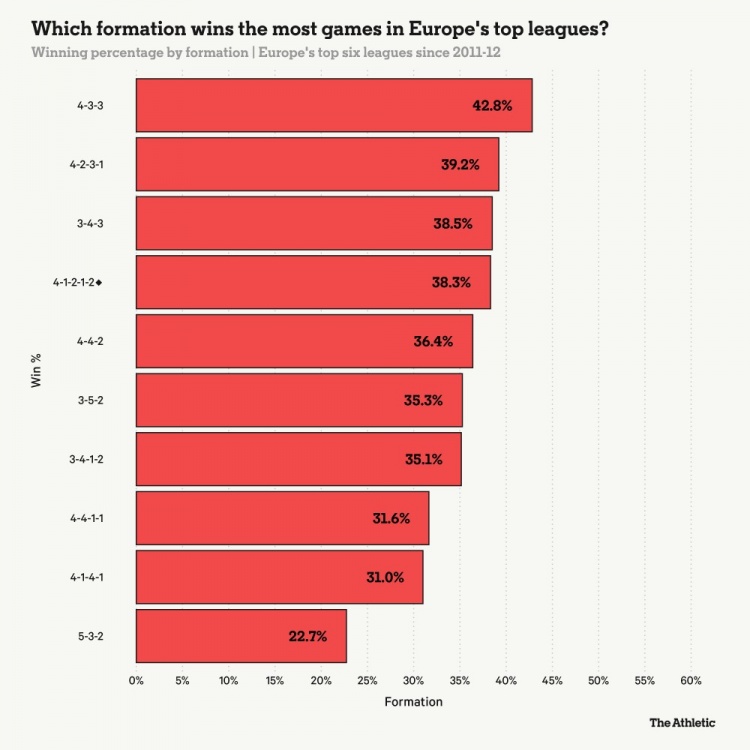
The 4-3-3 formation is still the team with the highest winning rate in football
But this success should be attributed more to the level of users. Barcelona, Liverpool, Manchester City and other giants are superior in strength, rather than the formation's own aura of victory. It is against this background that Paris Saint-Germain used the 4-3-3 system to win the Champions League. Although their passing heat map last season showed that their formation has moved away from the traditional model, with full-back Hakimi often operating as a fourth midfielder.

But just like Cruyff's legendary team, Paris uses smooth coordination and dazzling rotations to interpret the essence of the 4-3-3 system. It may no longer be defined by clear tactical boundaries, but the 4-3-3 formation is still the ultimate stage for the most stunning performances on the pitch.
Mini-game recommendations:Twist Hit

